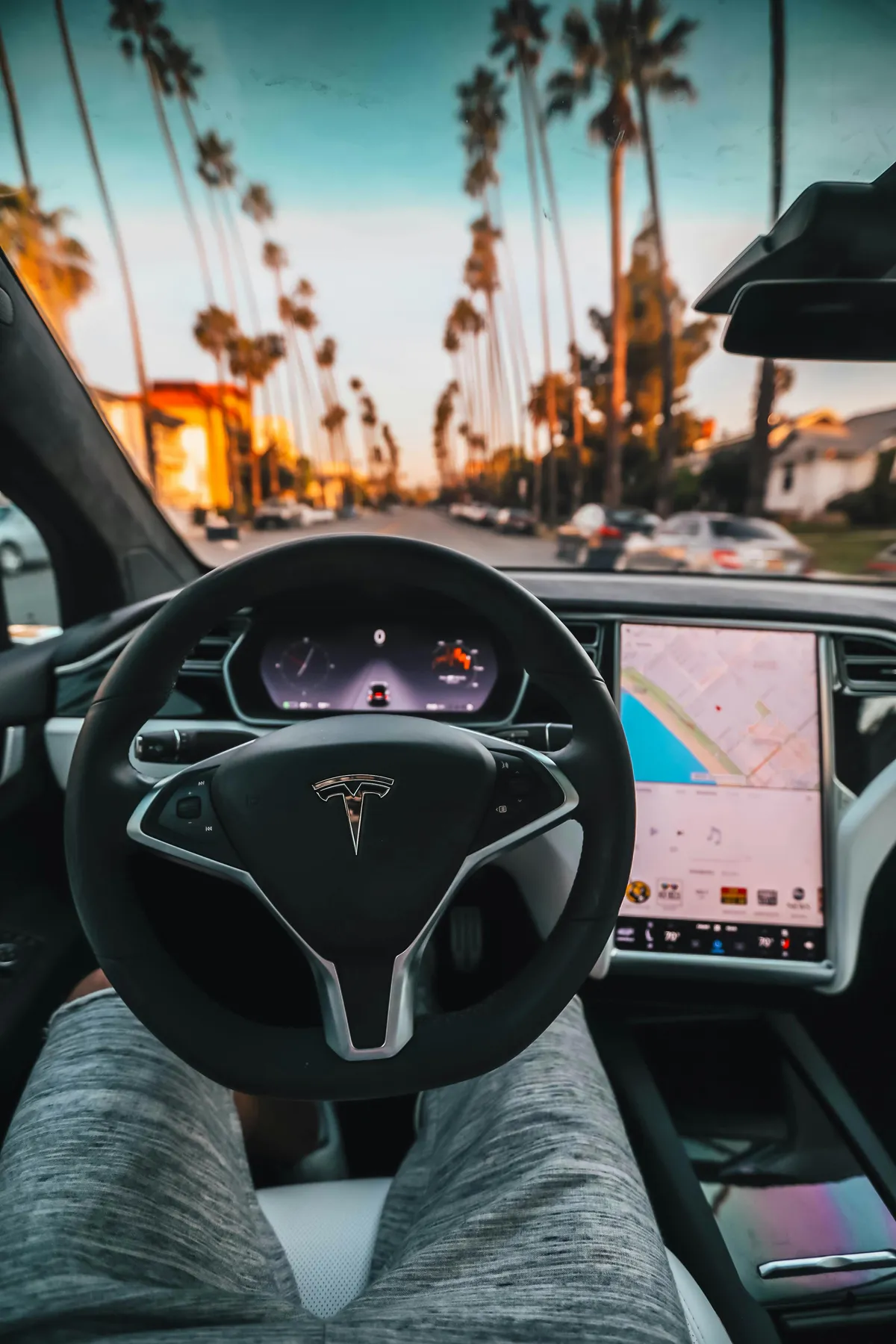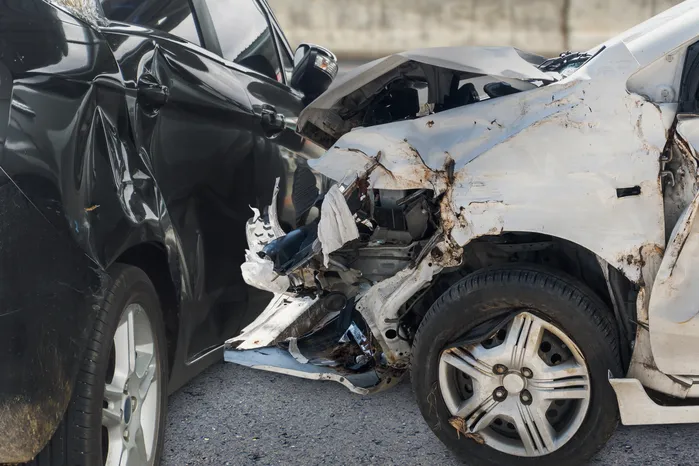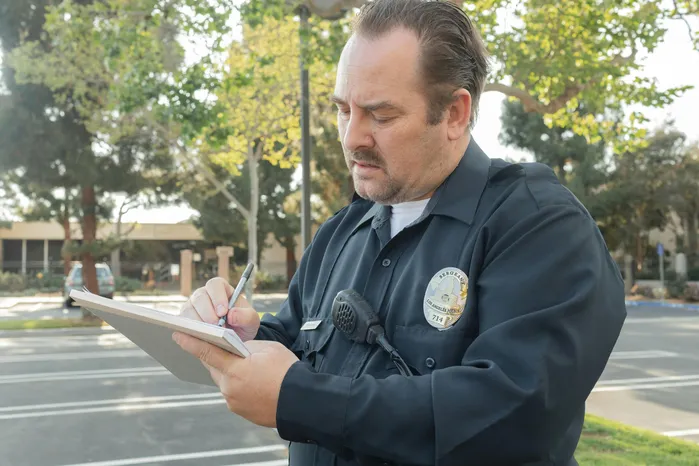7 min read time
Table of Contents

Immediate Steps to Take After a Tesla Autopilot Crash
After a Tesla Autopilot crash, it's crucial to take steps that protect your legal rights and potential Tesla Autopilot accident claim.
Below, we go into depth on the immediate steps you should take after a Tesla Autopilot accident.
Ensure the Safety of Yourself and Others
Immediately after the car accident, ensure the safety of yourself, your occupants, and others involved in the accident by:
- Checking if you or others are injured
- Calling 911 for medical help if needed
- Moving to a safe area away from traffic
- Helping those around you if they need assistance
Gather Evidence at the Accident Scene
When it comes to winning a self-driving car accident claim, evidence is crucial, so start gathering as much of it as possible at the scene of the crash by:
- Taking photos of all vehicles involved and the surrounding road conditions
- Documenting your injuries and damages with pictures and videos
- Collect contact information from witnesses
- Obtain the recording from the Tesla vehicle
- Exchange information with the other drivers involved
Notifying Tesla and the Insurance Company
Call Tesla's customer service to report the crash and inform your insurance company about the incident right away.
However, avoid going into the specifics of the accident and avoid answering any questions you may be uncomfortable answering without legal representation.
Understanding Tesla Autopilot Technology
Tesla Autopilot is an advanced driver assistance system (ADAS) designed to help with tasks like steering, acceleration, and braking on public highways and roads.
ADAS comes standard in all new Tesla vehicles, but does not provide fully autonomous driving and requires constant human driver involvement. According to SAE International's classification, Tesla Autopilot falls under Level 2 vehicle automation, which means it can control the vehicle within a lane and adjust speed accordingly, yet still requires constant driver supervision to ensure safety in complex driving scenarios.
Key features of Autopilot include Traffic-Aware Cruise Control and Autosteer:
- Traffic-Aware Cruise Control adjusts your car's speed to match the surrounding traffic
- Autosteer keeps the vehicle centered in its lane
However, these self-driving capabilities are limited mainly to well-marked highways with clear lanes and center dividers, as the system may not work on roads with faded lane markings. Additionally, the autopilot system can face challenges in adverse weather conditions, such as heavy rain or fog, when lane markings can become obscured.
Tesla warns of the necessity of active driver oversight during Autopilot mode usage. To ensure this, Tesla employs various driver monitoring systems, like in-car cameras that track eye movement and torque sensors that detect hand presence on the steering wheel to prevent incidents involving Autopilot.
If a driver ignores warnings from the system, it will display escalating alerts until eventually disabling the Autopilot feature to prevent potential Autopilot crashes.
Misunderstandings about Autopilot's capabilities are common; the name "Autopilot" might give the impression of fully automated driving, which is incorrect, and can lead to a false sense of security on the road.
The reality is that drivers must remain vigilant and prepared to take control of the vehicle at any moment, especially when using the autopilot feature.
This requirement for drivers underscores why Tesla explicitly states that Autopilot is not fully autonomous and attempts to keep driver attentiveness through continuous monitoring and feedback mechanisms, including the detection of human error or inattentiveness. Despite ongoing advancements in technology, Autopilot remains a tool designed for assistance rather than complete automation.
Tips for Documenting the Scene of a Tesla Autopilot Crash

After being in a self-driving vehicle accident, it's crucial that you gather as much evidence as possible at the accident scene, as any evidence you obtain can be used to later determine liability and obtain maximum compensation.
Photographing the Vehicle and Surroundings
Take wide-angle shots of the entire scene, then zoom in on each vehicle's damage.
Snap photos of road signs, lane markings, weather conditions, traffic signals, and stationary objects. Get close-ups of any unique identifiers, such as license plates or dents.
Don't forget to photograph your vehicle from different angles for a clear record of the crash impact involving a Tesla Autopilot system.
Collecting Witness Information and Statements
While Tesla vehicles are constantly recording even during an accident, witness statements are still vital as they provide a view completely outside of the accident.
Tips for gathering witness information and statements are:
- Talk to witnesses at the scene right away
- Ask for their contact information and any details they saw
- Take notes on what each witness says while it's fresh
Seeking Immediate Medical Attention
If involved in a Tesla Autopilot car accident, seek medical attention immediately, even if your injuries are minor.
Hidden injuries like internal bleeding or brain trauma may only appear later and can lead to a fatal accident if not properly and timely treated. Visiting an emergency room or a doctor is crucial to ensure proper medical evaluation and documentation of medical expenses.
Evaluating Injuries for All Parties Involved
Right after the self-driving vehicle crash, check if anyone is injured and call 911 if there are serious injuries.
Even if everyone feels fine, it's important that everyone, including yourself, see a doctor because hidden injuries might lead to severe complications later.
Documenting Medical Care and Treatment Plans
When seeking medical attention after an autopilot crash involving a Tesla vehicle, bring all your medical records.
Share your history with new doctors to avoid misdiagnosis or ineffective treatment. Keep a list of current medications and any allergies you have. Follow up on appointments and keep track of all treatments received.
Additionally, keep all medical bills related to the treatment you're receiving for your accident injuries, as they will be helpful when you seek compensation.
Obtaining Medical Reports for a Personal Injury Lawsuit
To get medical records for a claim, contact the hospital or clinic where you received treatment.
Ask for the medical records department and request a copy of your report. They may ask for identification and proof of your visit, and you may also need to fill out a release form to authorize the release of information to a personal injury attorney.
Insurance Claims Process for Tesla Owners
When involved in a Tesla accident, immediately notify your insurance company, as often required by an insurance company policy.
Ensure to preserve all relevant evidence and contact an experienced attorney to help negotiate settlements with insurers, explain your legal options, and file lawsuits on your behalf if necessary.
Notifying the Insurance Provider Promptly
To ensure a smooth claims process and avoid having your claim denied, be sure to:
- Report the accident within 24 to 72 hours, as required by your insurance company policy
- Provide details about what happened without adding assumptions
- Seek Legal Representation
Submitting Required Documentation for Claims
To submit your claim, gather and organize all necessary documents, including:
- Photos and videos from the accident scene
- Police reports
- Medical records
- Receipts for repairs or replacement parts
List these items neatly to ensure a smooth claims process.
Understanding Coverage for Tesla Autopilot-Related Incidents
In Tesla Autopilot crashes, you may be able to seek coverage from either the at-fault party's insurance company or Tesla's insurance company if Tesla's Autopilot technology played a role in the accident.
Schedule a free case evaluation with an attorney from the Rodney Okano Car Accident Lawyer Law Firm to learn who may be able to seek a settlement from.
Who Could Be Liable for a Tesla Autopilot Crash
After a Tesla Autopilot crash, determining legal liability is complex and varies based on the Tesla driver's actions, system performance, actions of other drivers, and numerous other factors.
It's essential to note that Tesla drivers can be held accountable for an accident, even with Autopilot engaged, due to the requirement that they must actively supervise the driving of their vehicle.
Identifying Potentially Liable Parties
To find out who might be responsible after an autopilot crash, look at these key areas:
- Driver Actions: Was the other driver paying attention and following traffic rules?
- System Issues: Did the autopilot malfunction or fail to work properly?
- Third-party Involvement: Were other drivers or road conditions a factor?
Each case is unique, so consider all details carefully, and be sure to take into account comparative negligence law, which allows for multiple parties to be at-fault for an accident.
Understanding Vehicle Manufacturer Responsibility
When an Autopilot crash occurs, Tesla, the manufacturer, might be held liable if there's proof of system malfunction or inadequate warnings about risks and limitations.
This could involve software defects, failure to warn users properly, or neglecting necessary updates involving driving vehicles.
To determine liability in accidents where Tesla could be held liable, it's important to work with an attorney who understands product liability laws and can navigate the legal framework of suing a large company.
Exploring Product Liability Laws
Product liability law allows manufacturers to be held responsible for a Tesla car accident if Autopilot malfunctions due to design flaws or software issues.
However, to win a product liability claim, you need to prove that Tesla knew or should have known about the risks and failed to warn drivers, or that the Autopilot malfunctioned.
The legal process of suing Tesla can be complex, so it's highly recommended to schedule a free consultation with the Las Vegas attorneys at the Rodney Okano Car Accident Lawyer Law Firm to ensure the responsible parties are held accountable.
Obtain the Compensation You're Entitled To
Contact Us Today
Rodney Okano Car Accident Lawyer is a Las Vegas personal injury law firm with over 20 years of experience helping clients obtain maximum compensation following injuries from accidents such as car crashes, worksite injuries, and slips and falls. Over those years, The Rodney Okano Car Accident Lawyer Law Firm has become an experienced law firm that can ensure exceptional results for any of its clients.





